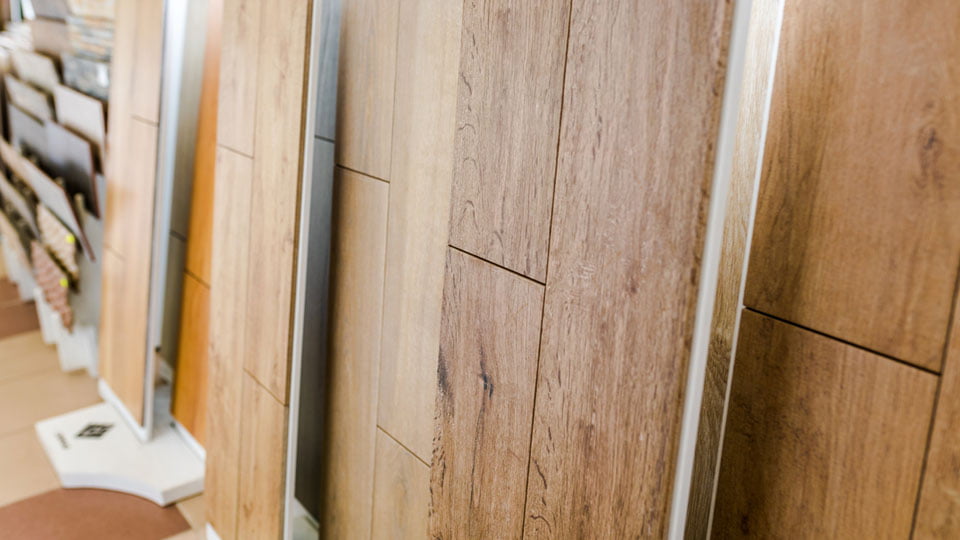There are many different types of flooring that can be used around the home and making the right choice for each room can be difficult.
In this article we take a look at a range of the most popular types of house flooring available today to help you select the best option for each room.
But first let’s take a look at what might influence your final decision.
How to choose the right flooring for your rooms
Every house, family, lifestyle and budget are different – that’s part of the fun! With that in mind, it isn’t really possible to give a clear comparison of the pros and cons of various flooring types applicable to everyone’s situation. But here are some of the criteria to keep in mind:
- What furniture and fittings are in the room.
- Whether the room will be heavily trafficked or hardly used.
- What the base will be below the flooring.
- Whether the room opens to the outside (are those kids going to run in with muddy shoes?)
- Your budget and timescales – including whether you’ll fit the flooring yourself.
- How warm is the room or how warm would you like it to be (is there underfloor heating for example?)
These conditions will be different for each room, but it will help to understand all of the options that are available to you before making your final choice.
Carpets
We begin with one of the most popular, the simple carpet. On the modern market however there are so many different choices of colour, pattern, weave and material for different carpet flooring types that it can be tricky to choose!
It is important to select a carpet that has the right lifespan for your needs in each room, depending on how often it is used. Carpets can also have a big effect on a room’s temperature and look but will need to work with furniture, skirting and door frames in order to complete a room.
The first decision to make is to choose what material the carpet is made from, as this will determine what options you have for colour and style. It is also important to select an underlay that works for your needs and this is typically selected on a room-by-room basis.
Timber and wood flooring
There are a range of wood flooring types suitable for almost any room in the house. From traditional types of pine flooring to more modern timber effect panels, wood flooring is one of the most popular options on the market today.
Wood floors can come in solid, natural timber styles or in engineered wood (a multi-layer option) formats, and many different types of tree are suitable sources including oak, ash and mahogany.
Wood floors require proper cleaning and maintenance to ensure their quality and durability are maintained but many types of wood flooring can also be re-surfaced and re-finished over time if required.
Porcelain or ceramic flooring
Non-slip and water resistant, ceramic flooring is arguably the best type of flooring for kitchen and bathroom floors available.
Ceramic flooring is extremely durable and available in many different colours and sizes. Obviously as a hard floor option it isn’t too comfortable underfoot and grout lines can become stained over time, though the ceramic tiles themselves are simple to clean.
The flooring can be textured to help prevent falls and can be installed relatively easily (especially with professional help) in rooms with complicated layouts or fitted furniture and plumbing.
Cork flooring
It is not the most well-known option but cork floors can be environmentally-friendly and naturally shock absorbing for a quiet and comfortable floor that will stand out to visitors.
Cork floors are usually provided as treated panels that can be fit together in a variety of ways. Durability and waterproofing is provided by the special wear layer added to the topmost surface and the base material has usually been acquired from highly sustainable sources.
Concrete flooring
Although you may not think of concrete as an attractive choice for your floors, a well-made and polished concrete floor can make a real difference to a house.
As concrete is poured onto a prepared floor base it isn’t usually suitable for upstairs rooms and it is hard underfoot, but there are a wide array of colours and polishing options available for all different room styles. Concrete is also highly durable and relatively simple to maintain and keep clean.
Many people often wonder what type of flooring can be used with underfloor heating and concrete is certainly one of the most popular options for this as it can be simply poured over the system.
Marble flooring
For a truly luxurious appearance marble flooring certainly stands out. Heavy marble slabs or tiles can be used as the floor in suitable rooms of the house (usually only those strong enough to take the weight) and will require little maintenance for many years once installed.
There are typically fewer options for marble floors than some other types due to the use of less synthetic material, but you can still find plenty of different colours and finishes to suit your room style.
Laminate flooring
Another very popular option, laminate floors can come in all sorts of colours and finishes making it suitable for many different rooms in the house. Laminate is essentially a multi-layer synthetic product that has been created with a wood, stone, ceramic or other effect.
It is important to select the right types of laminate flooring for your rooms by considering things like the traffic, heating requirements and fittings that it will need to work with. It is also possible to install laminate flooring yourself with a bit of guidance or you could pay for professional help.
Vinyl flooring
Vinyl flooring is different from laminate flooring due to the materials used – laminate usually makes greater use of wood by-products and resins whereas vinyl includes more plastics.
Vinyl flooring is similar to laminate in that there are a number of finishes, colours and textures available as this is a synthetic product. However, vinyl flooring’s avoidance of wood products does make it more resistant to moisture meaning it can be used in bathrooms and other areas likely to get damp.
Stone flooring
Similar to durable marble and concrete floors, a heavy stone floor will last a long time under even the heaviest household traffic.
There are many different materials available including slate, limestone, granite and travertine, and different colours and textures can be incorporated to adjust to your specific needs and room designs.
While it isn’t easy to install and requires some maintenance, a good quality stone floor will last many years.
Bamboo flooring
Finally, we have another alternative that not a lot of people may be familiar with. A good bamboo floor will provide a durable and attractive floor that will stay comfortable and keep in the heat.
Bamboo can be a little tricky to maintain (spills and damp in particular need to be cleaned thoroughly) but it is simple to install and there are many options available for different room designs.
Find your flooring
Floors don’t need to be an afterthought when upgrading or designing a new room in your house. With all of the different options available on the market you won’t need to compromise on performance just to get the aesthetics right either.
Take some time to find the right flooring material for your room, perhaps using friends’ houses, hotels, restaurants or even offices and shops for inspiration, and keep our guide above handy to refer back to whenever you need.



